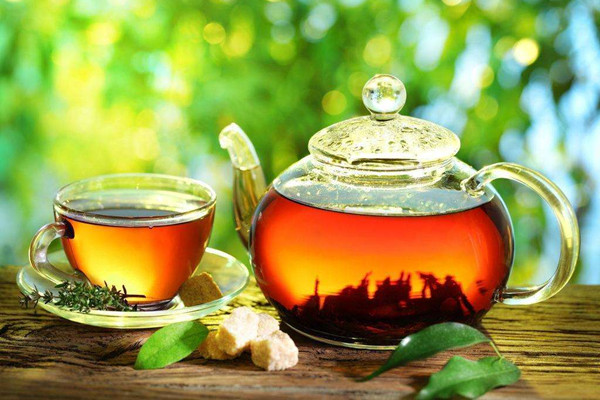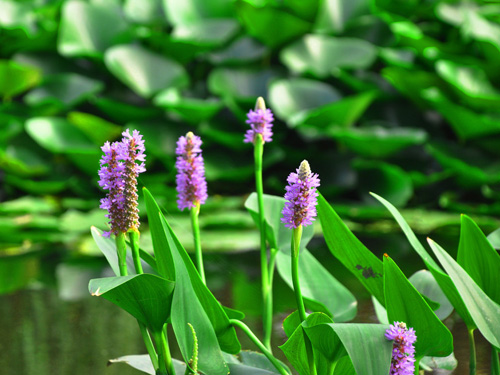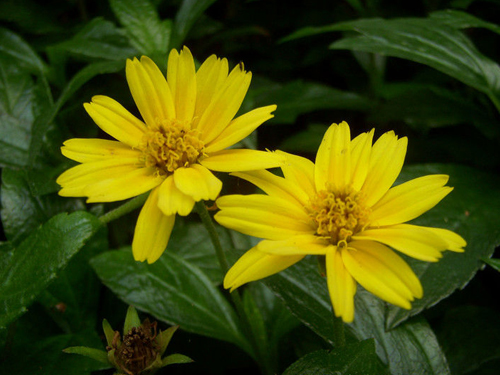Is it good for leftover tea and leftover tea to water flowers?
Watering any flowers with leftover tea and leftover tea is harmful but not beneficial. Leftover tea and leftover tea all contain a large amount of theophylline, and a large number of harmful gases and reducing substances are produced in the process of ripening and fermentation. when the leftover tea is irrigated for a long time, the soil surface often produces alkali collapse, and it is easy to hide diseases and insect pests. It is necessary to mature before application, and it is best not to use uncooked tea leaves.

Can the residual tea water the flowers?
Residual tea is a good potash fertilizer, which can be used to irrigate flowers and trees. It can not only maintain soil moisture, but also supplement nutrients to plants and promote plant roots to develop and branches and leaves to flourish.
Does the residual tea need to be fermented?
The residual tea can be fermented alone to water the flowers, or it can be fermented with rice water and orange peel to water the flowers.
The way of watering flowers with residual tea
1. After a day or two, the residual tea has been slightly fermented and can be used to water acidic flowers and plants.
two。 Put the residual tea, rice water and orange peel into a sealed fermentation. After the fermentation is completed, pour out the dregs, mix with a certain amount of water, and water the flowers and plants every few days.
3. The use of tea: if there is a lot of tea in the residual tea, you can first dry the tea, save up to a certain amount and then add soil to ferment, which can be used to improve the soil quality.
Residual tea is suitable for flowers.
The residual tea is sour, suitable for acid-loving plants, such as rhododendron, jasmine, orchid, but not for rose, chrysanthemum, cactus and other alkaline plants.
Watering Management of Flowers in Summer
1. Watering to maintain good air humidity, so as to prevent both drought and waterlogging, watering is the most frequent and important management work for flower growers. If the soil is too dry, the flowers will wilt or even die; while the soil is too wet, it will suffocate the roots and even rot roots. (1) watering time throughout the year, the summer watering time is the most fastidious, if a little careless, it will cause flowers injury, or even death. Generally speaking, it is best to water before 8 am and after sunset every day in summer. At this time, the air temperature, soil temperature and water temperature are all similar, which is more appropriate. Do not water in the hot sun at noon, because the basin soil is very hot at noon, when cold water is poured up, due to a sudden drop in soil temperature, it is easy to catch a cold like people, and the root hair of flowers is stimulated by temperature, affecting the normal absorption of water by the root system. Even flowers planted in the ground should not be watered at noon. If you forget to water in the morning, you will find that the potted flowers wilt badly at noon, and when you need to be watered immediately to replenish water, you must move the potted flowers to a cool place. After 20 ~ 30 minutes, the soil temperature of the pots will drop before watering. According to practice, foliage plants, such as brown bamboo, Nanyang fir and pocket coconut, can be watered around 10:00 in the morning and sprayed several times in the afternoon; flowering plants, such as geranium, Milan, camellia and rhododendron, can be watered thoroughly in the morning and sprayed several times in the afternoon according to the situation; succulent plants, such as crab claw orchid and cactus, can be watered thoroughly in the morning, sprayed in the afternoon to increase air humidity, and do not have to be watered every day.
(2) the method of watering and watering potted flowers should be dry and thoroughly watered at all times, that is to say, once the flowerpots are dry, they should be watered thoroughly in time, and never water half of the water. and many beginners who grow flowers have the bad habit of watering half a section of water. The so-called half-cut-off water means that although there are many times of watering, the amount of water watered each time is not enough, the watered water only moistens the topsoil layer, and the subsoil is dry, so the phenomenon of upper wet and dry waist water is formed in the basin. the result is that the upper wet makes the topsoil muddy and muddy, which over a long time will cause the upper root system to rot and die. The lower dry makes the middle and lower soil very dry, and a long time will lead to premature senescence or death of the middle and lower roots due to lack of water, while a hard plate layer is usually formed at the junction of upper wet and lower dry, which makes the potted flower roots difficult to tie down. poor development, slow growth or not long at all, which is also an important reason that seriously affects the quality of potted flowers and leads to the death of potted flowers. Check whether potted flowers are dry or wet, you can knock on the flowerpot up and down to listen to the sound, such as crisp, dry, heavy, not dry. Watering times and water quantity should be determined according to seasonal changes, weather conditions, flower species and their growth, and an appropriate amount must be achieved. In the period of high temperature in summer, more evaporation should be watered frequently; in the peak period of silicon growth, water and nutrients should be watered more frequently; wet flowers should be watered more, but early flowers should be watered less; herbaceous flowers should be watered more and woody flowers should be watered less. In short, when you carry a kettle in your hand, you must treat it differently and must not distribute it evenly. You must water more when you should water more and less when you should water less. It must be noted that when flowers are in bloom, do not water too much to prevent falling flowers.
(3) the water quality and water temperature of watering flowers are also very fastidious. It is best to use Rain Water to water flowers. If the conditions do not permit and can only be watered with tap water, then the tap water should be stored in a container for a few days to allow it to precipitate, on the one hand, to volatilize the atmosphere in the water, and on the other hand, it is better to water the flowers when the water temperature and air temperature are close. Generally speaking, the temperature difference between water temperature and air temperature should not exceed 5 ℃.
(4) watering matters for general flower lovers, they like to use some traditional methods to keep them. In fact, there are some methods that are not only unprofitable but also harmful to flowers. If you pour the leftover tea into the basin at will, you can only see the soil layer of the tea on the basin after several times, especially when the summer temperature is high and the time is a little longer, the tea will become moldy, resulting in moist topsoil and dry soil in the middle and lower layers. affect the water seepage and air permeability of the soil. For example, some people often water flowers with Amoy rice water, fish soup and bone soup, thinking that this can replenish the plant nutrients and make it grow stronger. In fact, this is also unscientific. Although these waters contain certain nutrients, the oil plants in them are not absorbed and can only be absorbed by plants after ripening and fermentation. What's more, don't use dishwashing water and face washing water to water flowers. Because the water contains a certain amount of salt, it will often change the composition of the soil in the long run. In addition, some people also like to buckle the eggshell upside down in the flowerpot and let the egg white flow into the soil, thinking that the egg white is also a good fertilizer. It goes without saying that its function is the same as rice water and fish soup. The water for watering flowers stored in vats and buckets is not as long as possible. In fact, over a long period of time, on the one hand, the water quality will change, on the other hand, it is easy to get worms. Therefore, it is better not to store water for more than 3 days in summer and autumn. When Rain Water is long in summer, he should pay attention to timely drainage. After heavy rain, if you find stagnant water in the basin, you can dump the basin and discharge the stagnant water; in rainy weather, you can move the potted flowers to shelter from the rain, in case Rain Water is too much, which is harmful to the growth of flowers. In addition, some flowers are neither dry nor hydrated. When there is no one to take care of the family temporarily, a cloth strip can be buried in the pot soil. The other end of the cloth strip is immersed in the water basin adjacent to the flowerpot, and the water can slowly moisten the soil through the cloth strip. This simple method of automatic watering of flowers might as well give it a try. In particular, it should be noted that some summer dormant flower species, such as cyclamen, do not need watering.
- Prev

It is good to water flowers with water from goldfish and aquarium with tropical fish.
Watering flowers with fish water can be irrigated directly. Not only there is little difference between water temperature and air temperature, but also the water quality is soft, high in nutrients and air. The fish basin water is directly exposed to the open air, and there is little difference between the fish basin water and the natural temperature,-some nutrients decompose quickly, the air content of the aquarium water is less, and the temperature difference between the aquarium water and the natural temperature is large.
- Next

Cultivation and Management of Chrysanthemum morifolium in South America and its efficacy and use
Chrysanthemum morifolium (Dijinhua, South American chamomile) scientific name: wedeliatrilobata alias: Trifid Chrysanthemum, Dijinhua, Diandra (Yunnan), keel seven families: Compositae morphological characteristics: perennial herbs. Stems creeping, leaves opposite, ovate-lanceolate
Related
- Fuxing push coffee new agricultural production and marketing class: lack of small-scale processing plants
- Jujube rice field leisure farm deep ploughing Yilan for five years to create a space for organic food and play
- Nongyu Farm-A trial of organic papaya for brave women with advanced technology
- Four points for attention in the prevention and control of diseases and insect pests of edible fungi
- How to add nutrient solution to Edible Fungi
- Is there any good way to control edible fungus mites?
- Open Inoculation Technology of Edible Fungi
- Is there any clever way to use fertilizer for edible fungus in winter?
- What agents are used to kill the pathogens of edible fungi in the mushroom shed?
- Rapid drying of Edible Fungi

